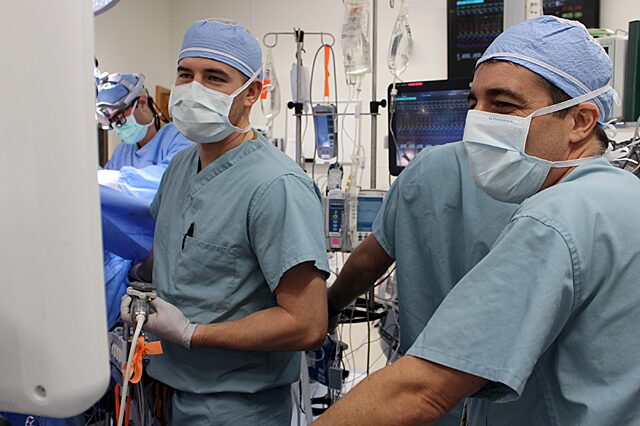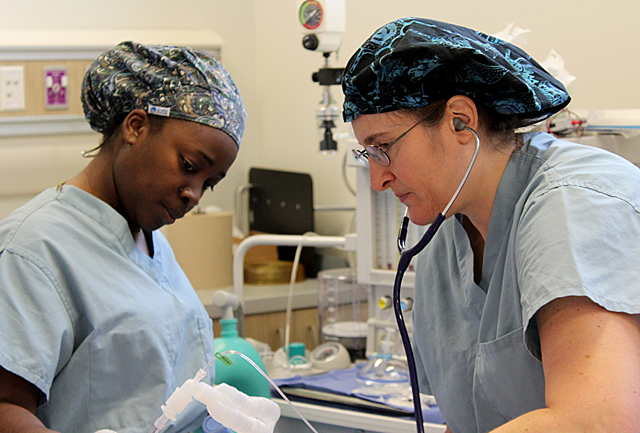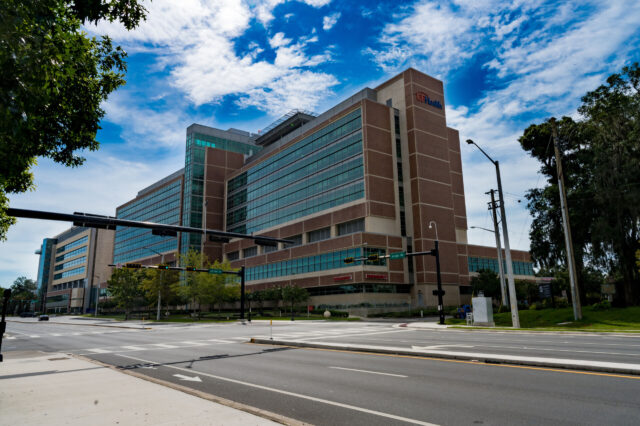Anesthesiology is a medical specialty that deals with the administration of anesthetics. These are drugs that induce temporary loss of bodily sensations, including pain and sometimes consciousness. These medications are used during surgical, dental and diagnostic procedures to ensure patients do not feel any pain or discomfort.
The University of Florida Department of Anesthesiology is a well-respected academic department. Our anesthesiologists contribute significantly to the field. They publish a large amount of research in the form of books, book chapters and manuscripts on topics. These include things like clinical and basic science, simulation training, cognition and neurodegenerative disorders. Our team of anesthesiologists are trained in several subspecialties, including:
Anesthesiologists play a vital role in ensuring patient comfort and safety. This includes before, during and after procedures. They work with the patient and surgeon before the procedure to create a plan that considers the patient's individual needs and medical history. During the procedure, they monitor the patient's vital signs to ensure that they are stable and safe, including:
- Heart rate
- Blood pressure
- Oxygen levels
Afterward, they continue to monitor the patient to ensure they are recovering as comfortably as possible.
In addition to being involved in all major surgeries, our anesthesiologists also play a key role in minor surgeries and outpatient procedures that do not involve general anesthesia, such as labor and delivery, colonoscopies and nerve blocks. They can also specialize in acute or chronic pain management and perform interventions for a variety of spinal and joint pains.
Different types of anesthesia
General anesthesia – General anesthesia renders a person unconscious, so they don’t feel pain during medical procedures or surgeries. This is done using drugs that are given through a needle or inhaled through a mask. While under general anesthesia, our patients’ vital signs, like heart rate and breathing, are closely monitored by our anesthesia care team. General anesthesia is usually used for complex surgeries like heart or brain surgery, as well as some tests that may cause discomfort.
IV sedation – IV sedation, also called conscious sedation, is a type of anesthesia that is given through a vein in the arm or hand to make the patient relaxed and drowsy during medical procedures or surgeries. Unlike general anesthesia where a person is unconscious, with IV sedation, the patient stays awake. But, they may not remember much of the procedure. It is commonly used for less invasive procedures. This includes things like colonoscopies or minor surgeries but can also be used for more complex procedures when combined with local anesthesia. The anesthesia care team adjusts the level of sedation during the procedure to ensure safety and comfort for the patient.
Regional anesthesia – Regional anesthesia numbs a specific region of the body, such as an arm, leg, or a group of nerves. It is administered through an injection near the nerves that supply the area being operated on, and it can also be given via a catheter for continuous pain relief after surgery. Unlike general anesthesia, regional anesthesia doesn't make a person unconscious. Instead, it blocks the sensations of pain in the affected area. It can be used for a variety of surgical procedures, ranging from minor outpatient procedures to major surgeries, and it generally has fewer side effects than other types of anesthesia.
Local anesthetic – Local anesthetic is a type of medication that we use to numb a specific part of the body during a medical procedure. It is administered through an injection or a topical application. It works by blocking nerve impulses in the area where it is applied. Local anesthetic does not make a person unconscious, and the patient remains awake and aware during the procedure. It is commonly used for minor surgical procedures and can also be used to relieve pain in chronic conditions such as arthritis or nerve damage. Local anesthetics are generally safe and have few side effects.





